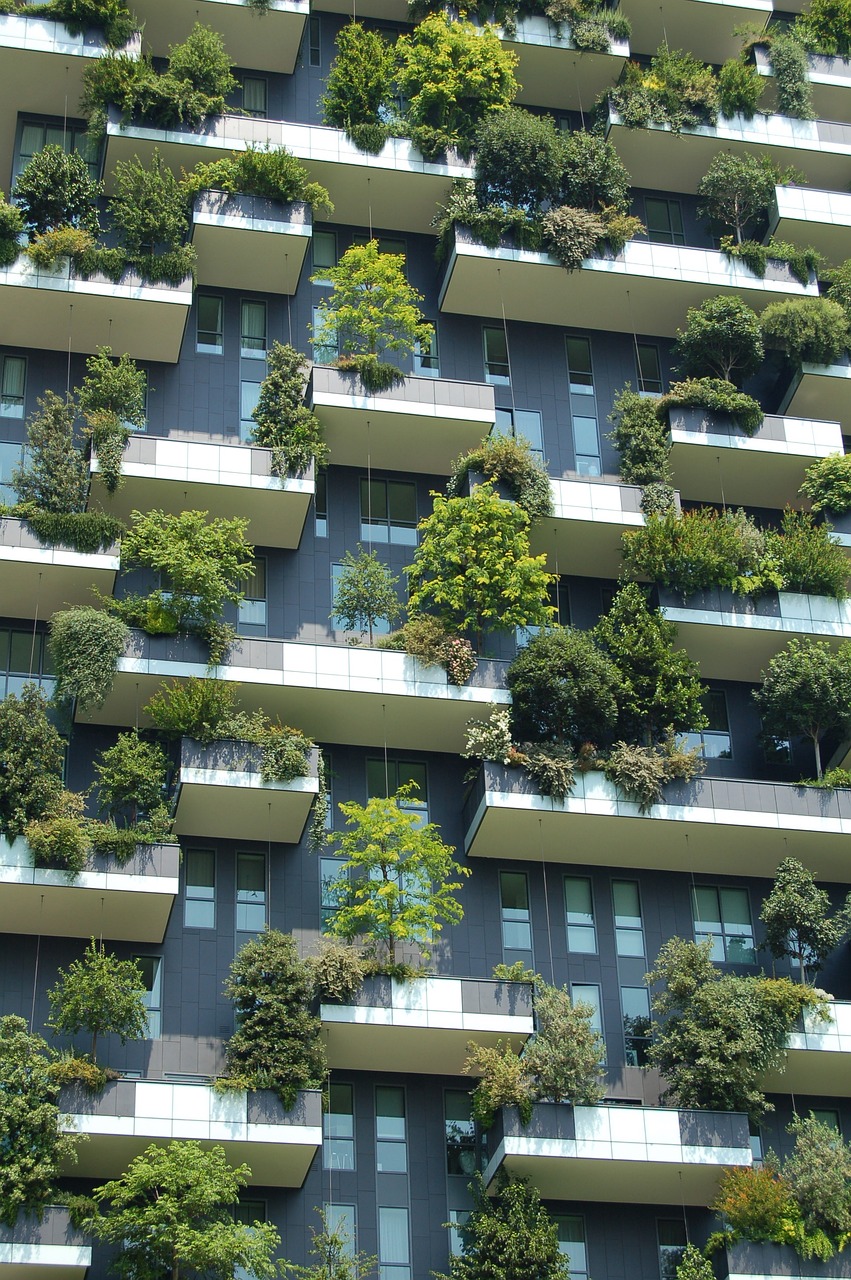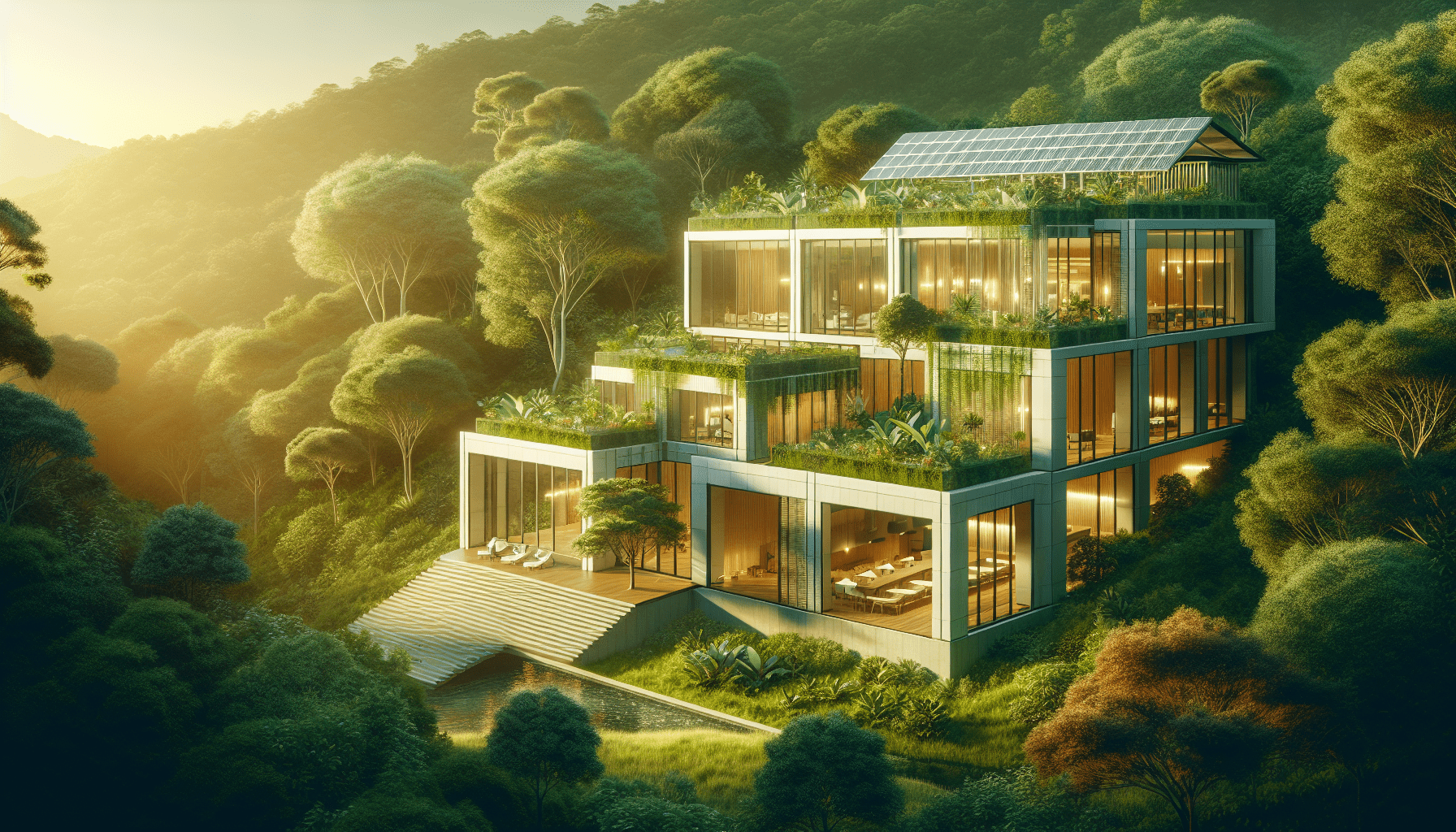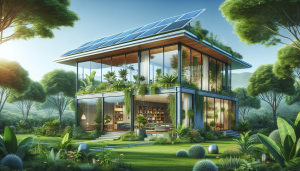In “How Does Sustainable Architecture Help The Environment?”, we explore the dynamic relationship between sustainable architecture and environmental health. Together, we delve into the innovative designs and practices that make buildings not only aesthetically pleasing but also eco-friendly. Our journey takes us through the key principles of sustainability in architecture, highlighting how these thoughtful approaches reduce carbon footprints, conserve natural resources, and promote a greener planet. By understanding these benefits, we grasp how our built environments can harmonize with nature, paving the way for a more sustainable future for us all. Have you ever wondered how sustainable architecture helps the environment?
As we navigate through the 21st century, the need to adopt more environmentally friendly practices has become increasingly apparent. One significant way we can do this is by advancing and embracing sustainable architecture. This approach to design and construction not only aims to reduce negative environmental impacts but also plays a crucial role in conserving resources for future generations.
What is Sustainable Architecture?
Before we delve deeper, let’s first understand what sustainable architecture actually means. Sustainable architecture, also known as green architecture, refers to designing buildings in a way that minimizes their environmental impact. It involves the careful consideration of building materials, energy efficiency, water use, and overall ecological footprint.
Core Principles of Sustainable Architecture
- Energy Efficiency: Reducing the amount of energy required to operate a building.
- Water Conservation: Efficient use of water resources through smart design.
- Material Selection: Utilizing sustainable, recycled, or low-impact materials.
- Indoor Environmental Quality: Ensuring healthy indoor environments through improved air quality and natural lighting.
- Sustainable Site Design: Minimizing the environmental impact of a building site.
How Does Sustainable Architecture Benefit the Environment?
Sustainable architecture provides a multitude of environmental benefits. Let’s break down these advantages into manageable sections for a clearer understanding.
Energy Consumption Reduction
Energy efficiency is a cornerstone of sustainable architecture. Traditional buildings consume a significant amount of energy for heating, cooling, lighting, and other operations. By adopting sustainable practices, we can drastically reduce this consumption.
- Solar Panels: Harnessing the energy of the sun to generate electricity.
- Energy-Efficient Appliances: Utilizing devices that require less energy.
- Insulation: Proper insulation reduces the need for artificial heating and cooling.
- Natural Ventilation: Designing buildings to take advantage of natural wind patterns.
Water Conservation
Water is a precious resource, and its efficient use is a key aspect of sustainable architecture. Techniques to conserve water include:
- Rainwater Harvesting: Collecting and storing rainwater for non-potable uses like irrigation.
- Low-Flow Fixtures: Installing faucets and showerheads that use less water.
- Greywater Recycling: Reusing wastewater from sinks and showers for landscape irrigation.
Use of Sustainable Materials
Selecting materials that have low environmental impacts is crucial. Sustainable materials can be recycled, renewable, or have a long lifecycle.
| Sustainable Material | Description | Example Uses |
|---|---|---|
| Recycled Steel | Steel made from recycled scrap metal. | Structural components |
| Bamboo | Rapidly renewable resource, strong and versatile. | Flooring, furniture |
| Recycled Plastics | Plastics made from recycled materials. | Outdoor furniture |
| Rammed Earth | Natural material that is durable and has low embodied energy. | Walls |
| Reclaimed Wood | Wood salvaged from old buildings, reducing the need to cut down trees. | Flooring, beams |
Enhancing Indoor Environmental Quality
Creating a healthy indoor environment is another essential element of sustainable architecture. This can be achieved through:
- Natural Lighting: Maximizing the use of sunlight reduces the need for artificial lighting.
- Air Quality: Using materials that don’t emit harmful chemicals and ensuring proper ventilation.
Minimizing Environmental Impact
Sustainable architecture also focuses on reducing the environmental impact of the building site itself.
- Green Roofing: Installing plants on rooftops to improve insulation and biodiversity.
- Permeable Paving: Allows water to seep through, reducing runoff and supporting groundwater recharge.
- Minimal Site Disturbance: Designing the building to fit within the natural landscape.

Economic Benefits of Sustainable Architecture
It’s not just the environment that gains from sustainable architecture; there are significant economic benefits as well.
Lower Operating Costs
Sustainable buildings generally have lower operating costs due to reduced energy and water usage. For example, energy-efficient heating systems and smart water management can lead to substantial savings over time.
Increased Property Value
Buildings designed with sustainability in mind often have higher property values. Prospective buyers are becoming more environmentally conscious, making green buildings more attractive.
Financial Incentives
Many governments offer incentives for sustainable building practices. These can include tax breaks, grants, or rebates, making green architecture financially beneficial.
Long-Term Durability
Sustainable materials often offer superior durability and require less maintenance, leading to long-term financial savings.
Social Impact of Sustainable Architecture
Beyond environmental and economic benefits, sustainable architecture also has a positive social impact.
Improved Quality of Life
Living in a sustainable building can lead to an enhanced quality of life. Factors such as better air quality, natural lighting, and reduced emissions contribute to healthier living environments.
Community Benefits
Sustainable architecture often encourages community engagement and education. Green buildings can become community landmarks, inspiring others to adopt similar practices.
Equity and Accessibility
Sustainable design frequently includes considerations for equity and accessibility, ensuring buildings are usable and enjoyable for all members of the community.

Technological Innovations in Sustainable Architecture
Advancements in technology are continually pushing the boundaries of what’s possible in sustainable architecture.
Smart Building Systems
Smart tech can optimize energy use through automated systems, reducing waste and improving efficiency. Examples include smart thermostats and lighting systems.
Advanced Materials
New sustainable materials are being developed that offer better performance and lower environmental impact. Examples include carbon-positive concrete and self-healing materials.
Renewable Energy Integration
Innovations in solar, wind, and other renewable energy sources are making it easier and more cost-effective to integrate these technologies into building designs.
Case Studies of Successful Sustainable Architecture
To better understand the real-world application and benefits of sustainable architecture, let’s look at a couple of case studies.
Bullitt Center, Seattle
Often referred to as the greenest commercial building in the world, the Bullitt Center in Seattle is a fantastic example of what sustainable architecture can achieve.
- Net Zero Energy: Generates as much energy as it uses through solar panels.
- Water Conservation: Captures and processes rainwater for building use.
- Sustainable Materials: Constructed using non-toxic, sustainable materials.
BedZED, London
BedZED (Beddington Zero Energy Development) is the UK’s largest eco-village and a model for sustainable urban living.
- Energy Efficiency: Uses 81% less energy for heating and 45% less electricity than an average UK home.
- Transportation: Encourages car-sharing and the use of electric cars.
- Water Usage: Consumes 58% less water than the average household.

Challenges and Future of Sustainable Architecture
While the benefits are clear, sustainable architecture faces several challenges that must be addressed for broader adoption.
Initial Cost
The upfront cost for sustainable building materials and technologies can be higher than traditional options. However, these costs often balance out in the long term through savings on energy and maintenance.
Knowledge and Expertise
There is a need for greater knowledge and expertise in sustainable architecture. This can be addressed through education and professional training.
Regulations and Standards
Current building codes and standards may not always support sustainable practices. Advocacy and policy changes are necessary to facilitate wider adoption.
Future Trends
The future of sustainable architecture looks promising with several emerging trends:
- Biophilic Design: Incorporating natural elements into building design to improve wellbeing.
- Circular Economy: Designing buildings with materials that can be reused or recycled at the end of their lifecycle.
- Carbon-Neutral Buildings: Moving towards buildings that produce no net carbon emissions.
How We Can Support Sustainable Architecture
We all have a role to play in promoting sustainable architecture, whether we are homeowners, architects, or simply concerned citizens.
Educate Ourselves
Understanding the principles and benefits of sustainable architecture can help us make informed decisions and advocate for greener practices.
Support Green Building Initiatives
Support policies and initiatives that promote sustainable building practices on a local and national level. This can include voting for green legislation or supporting companies that prioritize sustainability.
Choose Sustainable Options
Whenever possible, choose sustainable materials and practices for our own homes and buildings. Small actions, like using energy-efficient appliances or installing a rainwater harvesting system, can make a significant difference.

Conclusion
Sustainable architecture offers a path towards a more environmentally friendly, economically viable, and socially responsible future. By embracing its principles, we can help mitigate the impacts of climate change, conserve precious resources, and create healthier living environments for ourselves and future generations.
So, the next time we look at a building, let’s consider how it stands as a testament to innovative, thoughtful, and sustainable design. Together, we can champion the cause of sustainable architecture and make our world a better place to live in.



